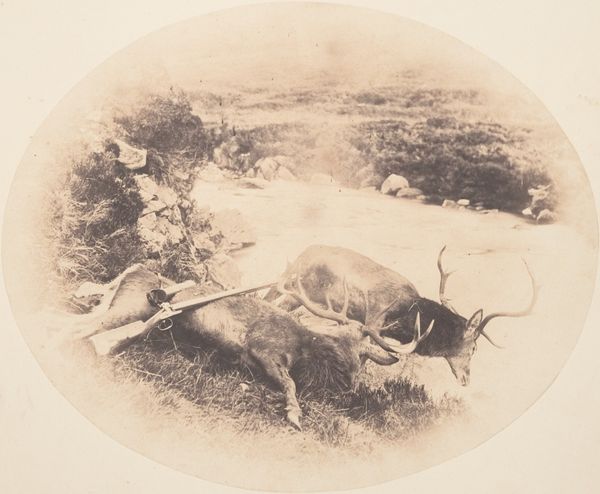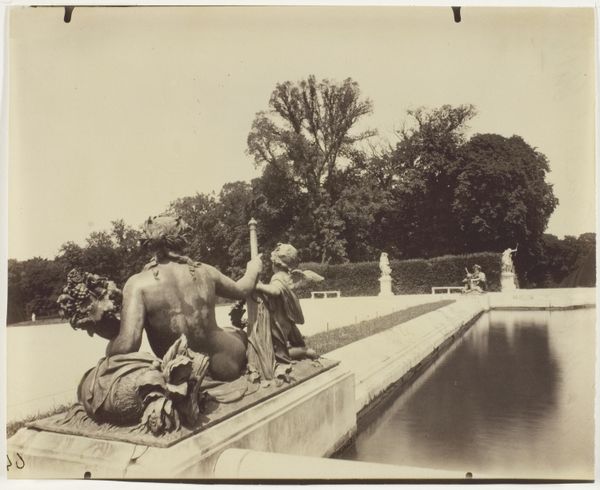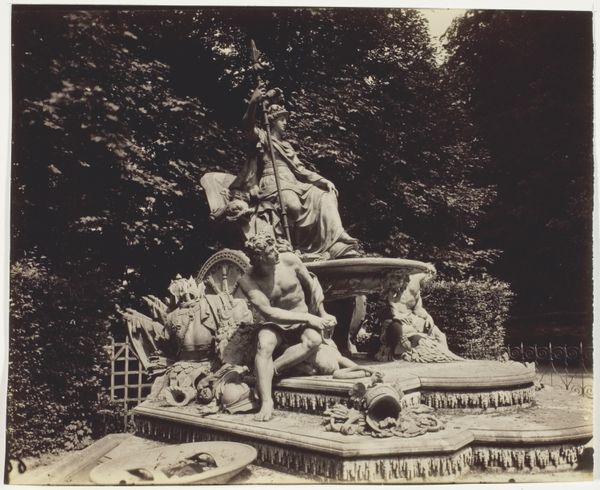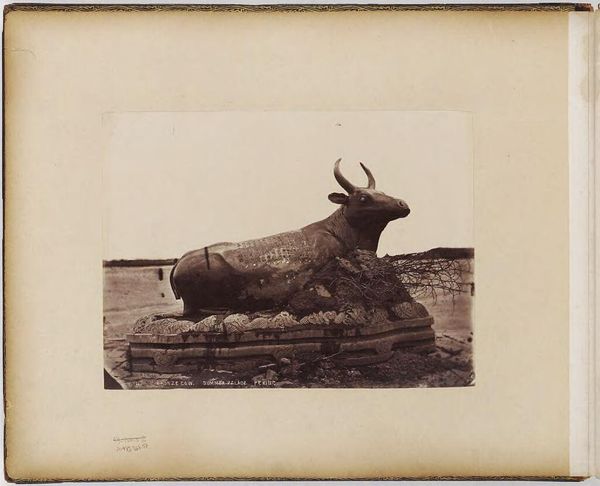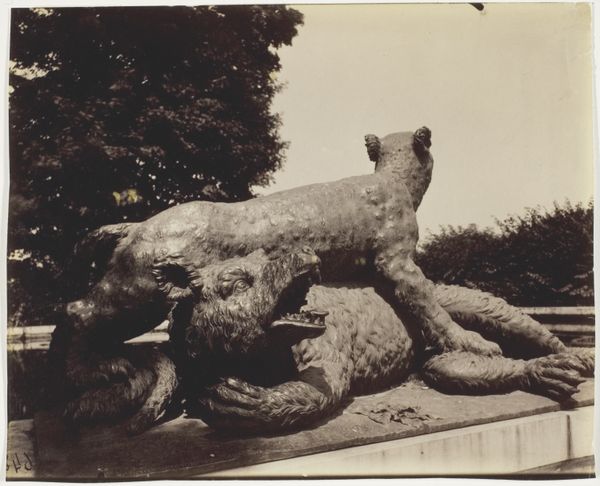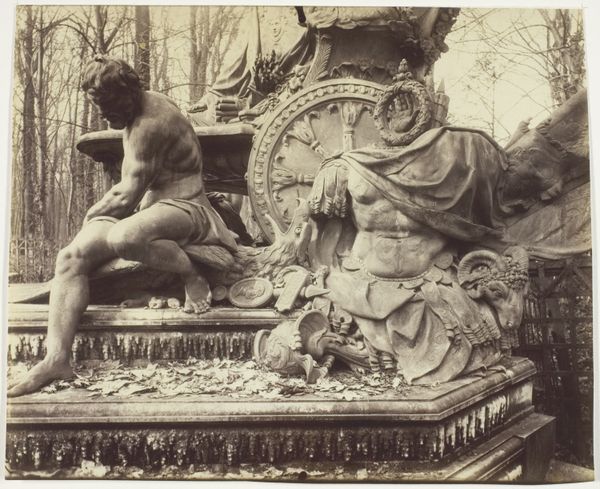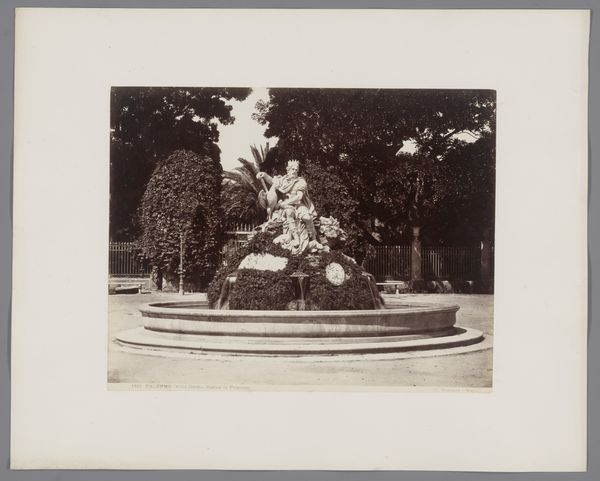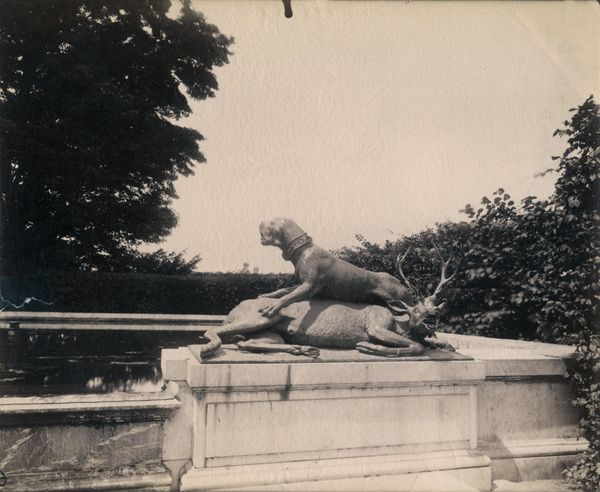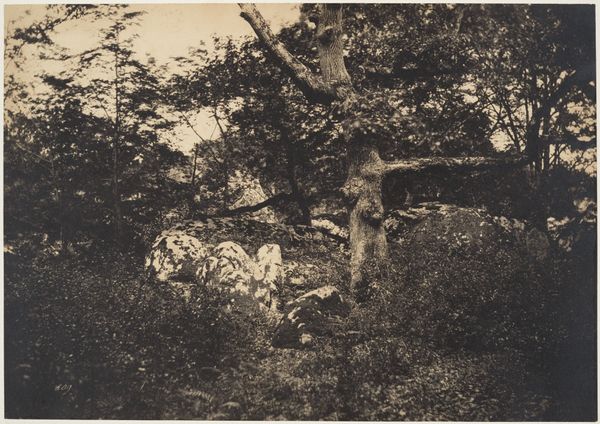
print, photography, sculpture
# print
#
landscape
#
photography
#
sculpture
#
academic-art
#
realism
Dimensions: 17.5 × 21.9 cm (image); 17.8 × 21.9 cm (paper)
Copyright: Public Domain
Editor: This photograph, "Versailles, Fontaine du Point du Jour," was captured in 1903 by Eugène Atget. It shows a sculpture in the Versailles gardens and the effect is somewhat dreamlike with its soft sepia tones. What strikes you most about the visual composition of this photograph? Curator: Immediately, I'm drawn to the interplay of light and shadow. Note how Atget uses the limited tonal range to articulate form. Observe how the brightest areas define the sculpted figures, drawing our eyes to their contours and the textures implied by the photographic print. Do you see how the dark areas serve not merely as background but as active elements in defining space and volume? Editor: Yes, the contrast makes the dog sculpture really stand out against the softer, blurry background of the palace. The framing makes it appear to almost be emerging from it. Is there any significance in the photograph's composition, how the sculptural elements interact, for example? Curator: Absolutely. The positioning of the sculptures in the frame creates a dialogue. The dominant sculpture, the dog over the stag, is intentionally placed forward. Beyond this pair are two other sculptures; a lone female, perhaps a goddess, and a bear on all fours. This visual relationship sets up a structured dynamic between action, implied narrative, and inert monumentality. Note also the stillness in the reflecting pond and that each of these moments have a relationship to the sculpture. The whole creates balance while setting up its tensions. Editor: So, the composition itself, along with Atget’s manipulation of light and shadow, transforms the photograph into more than a simple documentary piece. It highlights how crucial it is to assess an artwork purely by its inherent qualities, isn't it? Curator: Precisely. We see how, through his artistic choices, Atget transcends mere representation and enters the realm of visual philosophy. I was happy to see how adept you are becoming at focusing on structure, color and materiality! Editor: Thank you for expanding my view!
Comments
No comments
Be the first to comment and join the conversation on the ultimate creative platform.


